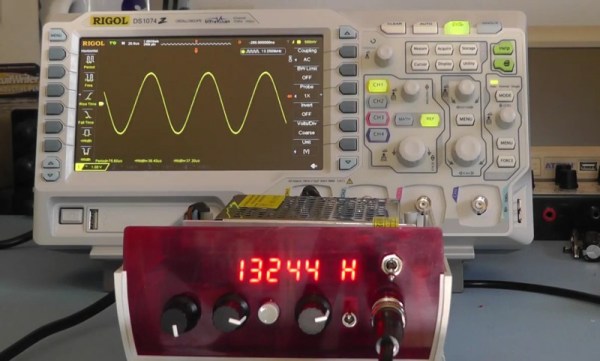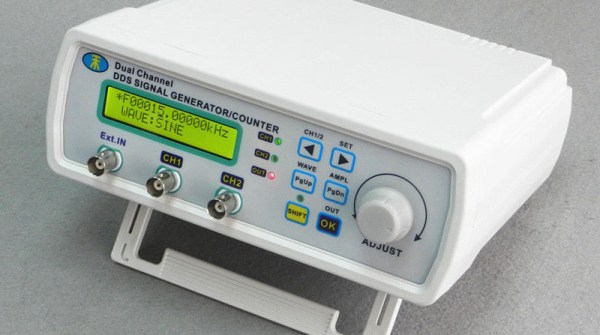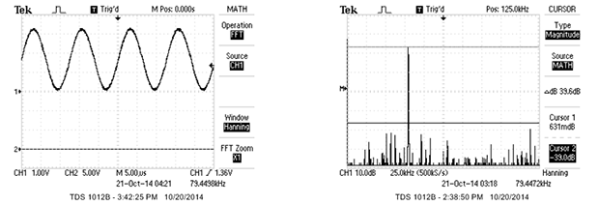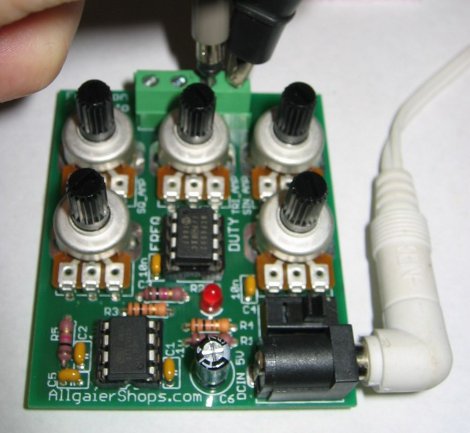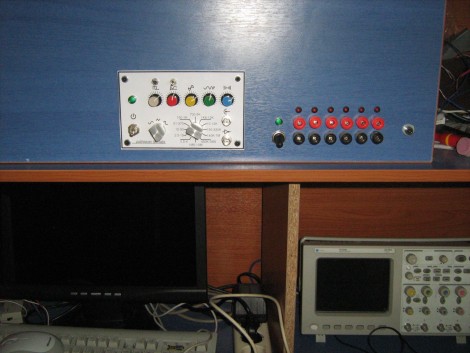[Scullcom] has posted the second part of his function generator build tutorial. [Scullcom] previously posted the first part of this build which covered the XR2206 monolithic function generator IC on which his design is based. In this part [Scullcom] covers the output stages and final assembly.
We’ve covered digital and analog function generator builds before. [Scullcom]’s design complements these well by providing a detailed description of the design he used, and has provided full schematics and code from the Arduino Nano used in this project. The design covers audio frequencies (~40Hz to 30KHz) with square, sine and triangle wave outputs. While the XR2206 can’t compete with modern DDS function generators, if you’re a hacker on a budget and looking for a fun project this may be just the thing for you. And even if you don’t decide to build the one, you might find [Scullcom]’s description of the output stage interesting.
Great project [Scullcom] and we look forward to your next build!

